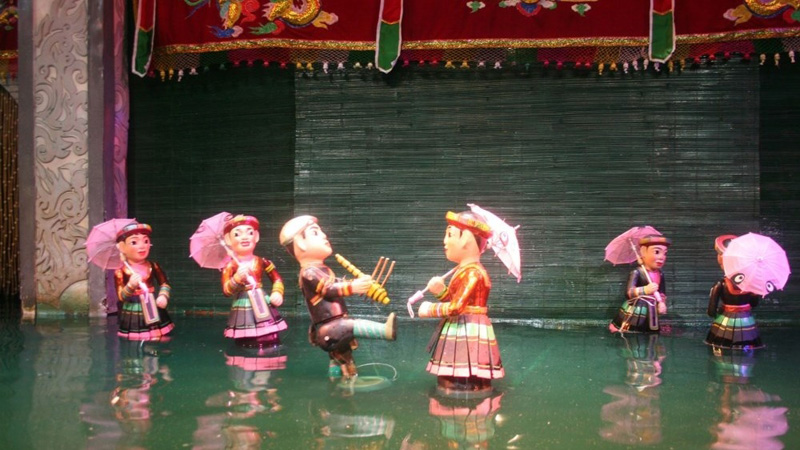


|
Illustrative image. Dao Thuc is the only traditional puppetry village in the city to
serve tourists in a professional way. Whenever guests request, including
groups of guests of only two or three, the guild still performs dozens of
performances. The puppetry village is also a favorite picnic destination of
many schools in Hanoi. At each performance, each artisan can receive a
remuneration of VND 90,000.
The breakthrough of the Dao Thuc puppetry village began more
than ten years ago. At that time many young people in the village had left
the village to work elsewhere. like the other young people, Nguyen The Nghi
also worked and had a very successful business. However, after meeting with
many people, he became more worried about the development of the puppet
village, as each year Dao Thuc village had only a few shows.
In early 2000, Vietnam was welcoming more and more foreign
tourists. Water puppetry is a Vietnamese cultural specialty, and Nghi thought
of serving guests to increase the income for artisans. Nghi and a number of
other young people proposed a number of ideas to the elderly artisans. At
first, they faced many difficulties in introducing puppetry through travel
companies, and building the puppetry as a local tourism product, but they
were not discouraged.
Realising that the internet is a highly effective advertising
tool, the troupe’s young members decided to take full advantage. They made a
website and the site provides readers with information about Vietnamese water
puppetry in general and Dao Thuc village’s puppetry in particular, as well as
contact information for those who are interested in the art form. The young
members have also promoted the image of their village through Facebook. These
internet tools have helped popularise the village and have contributed to
realising its long-term target: increased tourism. As a result, more and more
tourists are visiting Dao to enjoy puppetry.
With his love and responsibility for water puppetry and his home
town, Nghi decided to return to the village and chose to work in the field of
life insurance, earning a living whilst also contributing to Dao Thuc
village.
Due to an accident at an early age, Nguyen The Nghi's index
finger is unable to move. The accident made him unable to become a skilled
performer. However, along with the ability to organise business and foreign
affairs, he has the ability to host programmes and perform cheo singing,
making the event livelier. In 2016, Nguyen The Nghi was elected as head of
the Dao Thuc water puppetry troupe. Nowadays, Dao Thuc is not only more
professional in performing, but also in discovering tourism. At the village,
tourists can experience numerous activities, such as visiting the
manipulation room (space behind the shade in water puppetry), making puppets,
and buying souvenirs of wood puppets and bamboo sculpture art.
Talking about his work, head of the Dao Thuc water puppetry
troupe, Nguyen The Nghi said "previously, I never thought I would be
responsible for the puppetry guild; I went out to do business and then
returned home, just because I think, I was born and grew up in the village,
so no matter how rich I am in life, I wanted to contribute something for my village.”
|
Source: NDO